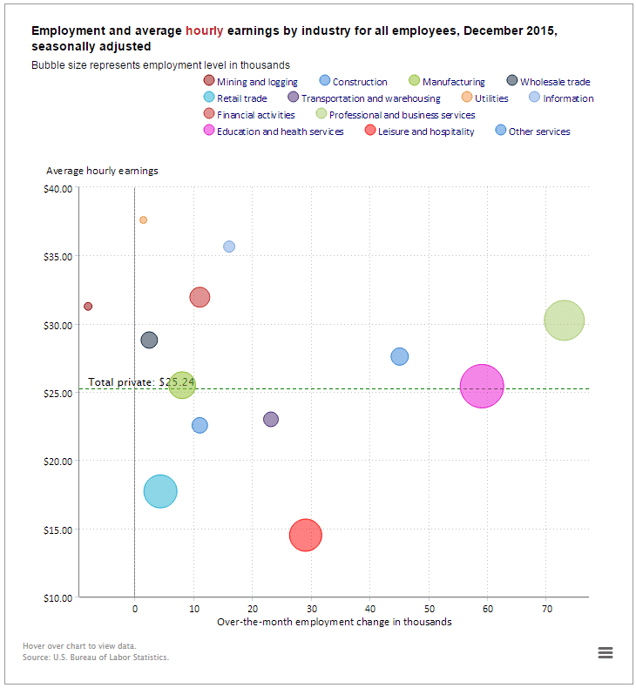
For December, the Labor Department reported that non-farm employment increased by a strong 292,000 positions, while the prior two months were upwardly revised by 50,000 jobs. Record warm weather in the month may have had an impact on the impressive December increase since construction jobs remained at unseasonably high levels.

For all of 2015, the economy added an average of 221,000 jobs per month. That is a slowdown from the 260,000 jobs generated per month in 2014, but ranks as the second strongest year since 1999. For the entire year, jobs increased by 2.7 million, compared with 3.1 million in 2014. Looking ahead, Moody’s Analytics is projecting average monthly gains closer to 200,000 than 300,000 in the first quarter. Nevertheless, this is well above the rate required to keep pace with growth in the working age population which is closer to 100,000.
The jobless rate remained relatively low at 5.0%. The wider measure of unemployment, the U-6 measure, was 9.9%, down from 11.2% a year ago. Moody’s Analytics estimates that this latter measure needs to fall to 9% for the economy to be considered at a “full employment” level. Meanwhile, in a separate report issued earlier this week, jobless claims fell to their lowest level in 42 years.
Average hourly earnings were up 2.5% from year-earlier levels, although wage growth remains generally weak.

Despite the strong jobs report, the 10-year U.S. Treasury yield closed at 2.11% on Friday. This is below the 2.3% yield reached on December 16th when the Federal Reserve nudged rates higher and reflects the events of the week associated with the turmoil in China’s stock market and the continued drop in oil prices to less than $33 per barrel. Most analysts are now anticipating that further rate hikes by the Federal Reserve will occur sometime after the first few months of the year as the Fed waits for further evidence of inflation. Commodity prices and wages will need to gain traction for that to occur.
About Beth Mace
Beth Burnham Mace is a special advisor to the National Investment Center for Seniors Housing & Care (NIC) focused exclusively on monitoring and reporting changes in capital markets impacting senior housing and care investments and operations. Mace served as Chief Economist and Director of Research and Analytics during her nine-year tenure on NIC’s leadership team. Before joining the NIC staff in 2014, Mace served on the NIC Board of Directors and chaired its Research Committee. She was also a director at AEW Capital Management and worked in the AEW Research Group for 17 years. Prior to joining AEW, Mace spent 10 years at Standard & Poor’s DRI/McGraw-Hill as director of its Regional Information Service. She also worked as a regional economist at Crocker Bank, and for the National Commission on Air Quality, the Brookings Institution, and Boston Edison. Mace is currently a member of the Institutional Real Estate Americas Editorial Advisory Board. In 2020, Mace was inducted into the McKnight’s Women of Distinction Hall of Honor. In 2014, she was appointed a fellow at the Homer Hoyt Institute and was awarded the title of a “Woman of Influence” in commercial real estate by Real Estate Forum Magazine and Globe Street. Mace earned an undergraduate degree from Mount Holyoke College and a master’s degree from the University of California. She also earned a Certified Business Economist™ designation from the National Association of Business Economists.
Connect with Beth Mace
Read More by Beth Mace